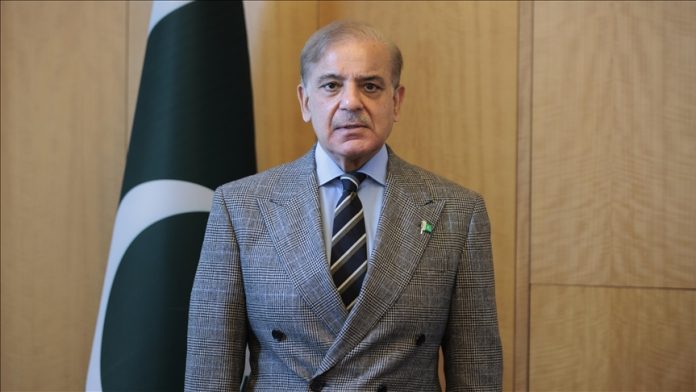Prime Minister Shehbaz Sharif on Thursday said that every speech by US President Donald Trump mentions “the downing of seven brand-new Indian aircraft by Pakistan”, declaring it proof of the country’s military strength and global recognition.
He made the remarks while addressing a foundation-laying ceremony for a Danish School in Bagh, Azad Jammu and Kashmir (AJK).
PM Shehbaz said that the latest report submitted to the US Congress “stamped” Pakistan’s stance on events of the May conflict, asserting that “India had received a stinging slap from Pakistan’s armed forces”.
“Allah Almighty has honoured Pakistan through the bravery of our soldiers,” he added.
A report presented to the United States Congress acknowledged Pakistan’s “military success over India” in the four-day war in May this year, stating that Pakistan used Chinese-made weapons to down Indian fighter jets, including French-made Rafales.
The prime minister claimed that the Pakistan Air Force (PAF) and the army had forced India “to its knees within four days”, arguing that Trump’s repeated praise of Pakistan in his public speeches was further acknowledgement of that battlefield performance.
“Trump praises Pakistan in every speech,” he said.
Turning to education, PM Shehbaz said Danish Schools were transforming opportunities for children across the country.
He noted that students at these institutions receive free education, accommodation, uniforms and support on merit, adding that the network, launched in Punjab, was now expanding nationwide. He announced that the Bagh campus would be inaugurated on March 23, 2026.
PM Shehbaz also indicated that a Danish School would be approved for Forward Kahuta, saying the dream of spreading such institutions to AJK was now close to fulfilment.
The Pakistan-India conflict was instigated by India after launching strikes inside Pakistan following a deadly attack that killed 26 people in the Indian Illegally Occupied Jammu and Kashmir’s Pahalgam town.
The US-China Economic and Security Review Commission report — reviewing US-China security and foreign affairs — highlighted the deepening defence cooperation between Islamabad and Beijing, stating that Pakistan employed advanced Chinese weaponry to enhance its military edge over India.
The conflict saw Pakistan successfully employing China’s modern weapons systems in active combat for the first time, including the HQ-9 air-defence system, PL-15 air-to-air missiles, and J-10C fighter aircraft.
The clash — during which Islamabad says the PAF downed seven Indian fighter jets, including Rafales — became a notable “selling point” for China’s defence sales efforts, the report added.
It also noted that China offered to sell 40 J-35 fifth-generation fighter jets, KJ-500 surveillance aircraft, and ballistic missile defence systems to Pakistan in June.
The report also emphasised the intensity of the conflict, observing that both countries struck targets deeper into each other’s territories “than at any point in the past 50 years”.
The deadly conflict between the two countries began when India conducted missile strikes inside Pakistan during the night of May 5 and 6, which New Delhi claimed were aimed at “terrorist targets” in response to the Pahalgam attack.
However, the strikes resulted in the martyrdom of several civilians and security personnel, while Pakistan, in addition to downing Rafales and other fighter jets, downed dozens of drones.
Pakistan Armed Forces then launched a large-scale retaliatory strike, named “Operation Bunyan-um-Marsoos”, targeting over 20 Indian military sites across multiple regions.
The Pakistan Air Force also used its JF-17 Thunder jets to destroy India’s S-400 air defence system in Adampur by using hypersonic missiles.
The clashes between the two nuclear-armed nations came to a close on May 10 after a ceasefire agreement brokered by the United States. –Agencies




